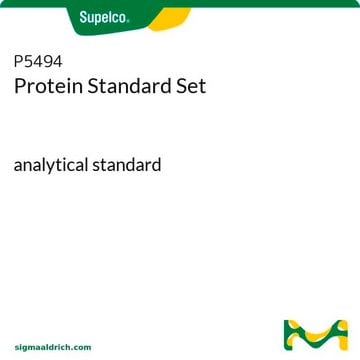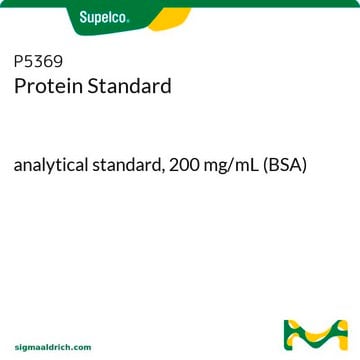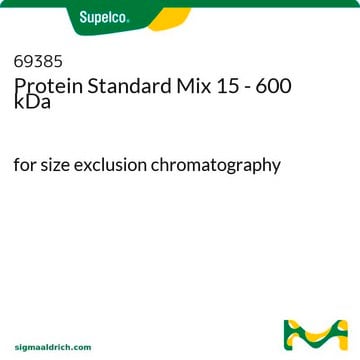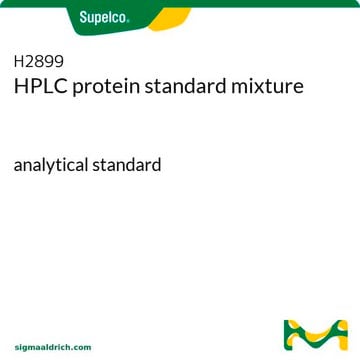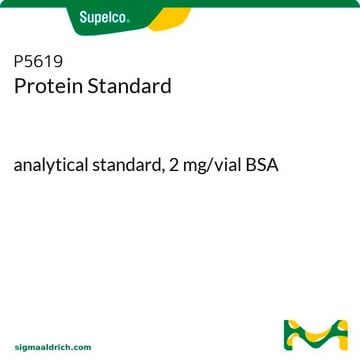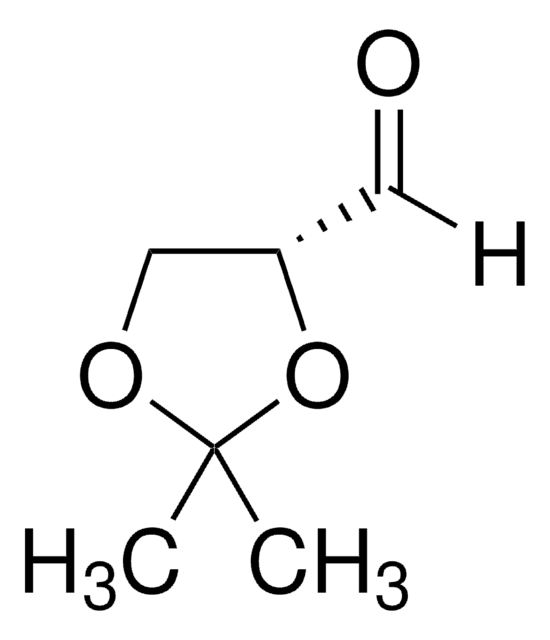P8994
Protein Standard, 80 mg/ml BSA
analytical standard
Autenticatiper visualizzare i prezzi riservati alla tua organizzazione & contrattuali
About This Item
Codice UNSPSC:
85151701
Prodotti consigliati
Grado
analytical standard
Livello qualitativo
Classi chimiche degli analiti
amino acids, peptides, proteins
tecniche
gel permeation chromatography (GPC): suitable
applicazioni
food and beverages
Formato
neat
Temperatura di conservazione
2-8°C
Codice della classe di stoccaggio
12 - Non Combustible Liquids
Classe di pericolosità dell'acqua (WGK)
WGK 2
Punto d’infiammabilità (°F)
Not applicable
Punto d’infiammabilità (°C)
Not applicable
Choose from one of the most recent versions:
Certificati d'analisi (COA)
Lot/Batch Number
Don't see the Right Version?
If you require a particular version, you can look up a specific certificate by the Lot or Batch number.
Possiedi già questo prodotto?
I documenti relativi ai prodotti acquistati recentemente sono disponibili nell’Archivio dei documenti.
Ganary Dabiri et al.
The Journal of investigative dermatology, 128(10), 2518-2525 (2008-04-11)
Following severe traumatic or thermal injury to the dermis, hypertrophic scars (HTSs) often develop in humans. These scar fibroblasts (hypertrophic scar fibroblasts (HTSFs)) retain the myofibroblast phenotype persistently, rather than transiently as in acute wounds. These pathogenic myofibroblasts constitutively express
Guowu Hu et al.
The Journal of clinical investigation, 118(3), 1186-1197 (2008-02-09)
Autophagy is a process by which cells recycle cytoplasm and defective organelles during stress situations such as nutrient starvation. It can also be used by host cells as an immune defense mechanism to eliminate infectious pathogens. Here we describe the
Nabanita De et al.
PLoS biology, 6(3), e67-e67 (2008-03-28)
Environmental signals that trigger bacterial pathogenesis and biofilm formation are mediated by changes in the level of cyclic dimeric guanosine monophosphate (c-di-GMP), a unique eubacterial second messenger. Tight regulation of cellular c-di-GMP concentration is governed by diguanylate cyclases and phosphodiesterases
Umut Gazi et al.
The Journal of biological chemistry, 286(10), 7822-7829 (2011-01-06)
The mannose receptor (MR) is an endocytic type I membrane molecule with a broad ligand specificity that is involved in both hemostasis and pathogen recognition. Membrane-anchored MR is cleaved by a metalloproteinase into functional soluble MR (sMR) composed of the
Il team dei nostri ricercatori vanta grande esperienza in tutte le aree della ricerca quali Life Science, scienza dei materiali, sintesi chimica, cromatografia, discipline analitiche, ecc..
Contatta l'Assistenza Tecnica.